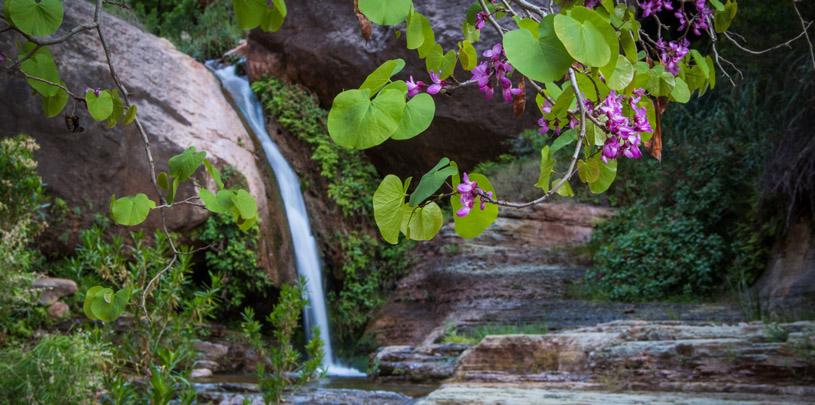
 by Stephanie Smith, GIS Director
by Stephanie Smith, GIS Director
What comes to mind when you hear the words “lush” and “green”? I bet it’s not the Grand Canyon. But, hidden between layers of canyon rock, water springs to the surface creating verdant habitats for wildlife, plants, and communities. These watering holes are the lifeblood of the canyon and support more than 500 times as many species as the surrounding arid lands. They’re also rooted in the traditions of the native peoples of the Grand Canyon region.
These oases in the desert have suffered from years of overuse and abuse. But, when restored and protected, they have the potential to replenish life in the desert.
"Threatened Waters: Grand Canyon’s Seeps and Springs" tells the story of these hidden gems, the abuse they have weathered through the years, and the efforts to restore and protect them for generations to come.
Conveying the importance of a mostly hidden water source is no easy task. As a cartographer, the first instinct might be to display the locations of springs across the landscape. But, the locations are often kept secret for the protection of the springs themselves and the preservation of tribal sacred sites. There are many who would seek to exploit these treasures by depleting the water, killing or trapping the wildlife, or stealing the rare plants.
A further challenge is displaying the importance of restoring these ancient water sources. This process is not a glamorous one and often the results of the hard labor it requires are not seen for years. With the help of some very talented photographers, volunteers, and writers, "Threatened Waters" brings these watery gems to life on your screen and takes you deep into the history and current threats to these hidden areas.
As 2024 draws to a close, we look back at five maps we created this year that give us hope for 2025.
Read MoreFour of the five most dangerous sections of the haul route are on the Navajo Nation.
Read MorePronghorn and barbed wire fences don't mix, but volunteers are working to change that, one wire at a time.
Read More